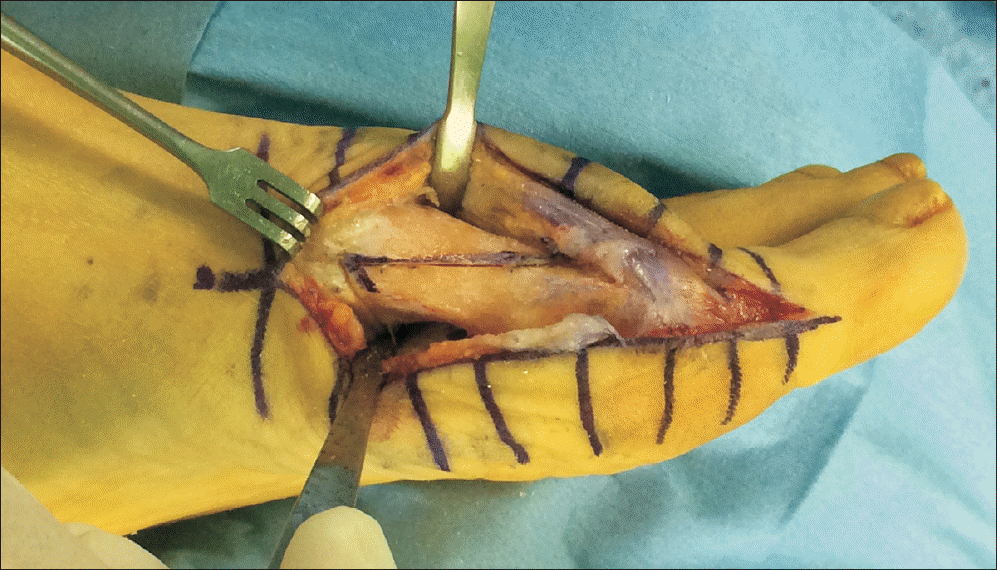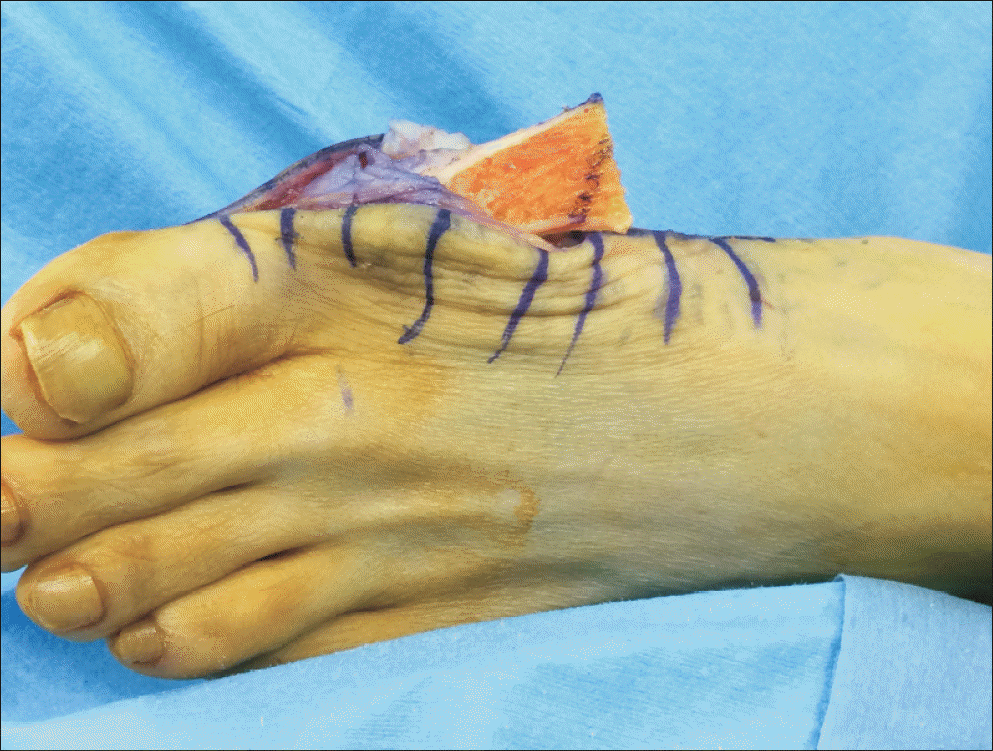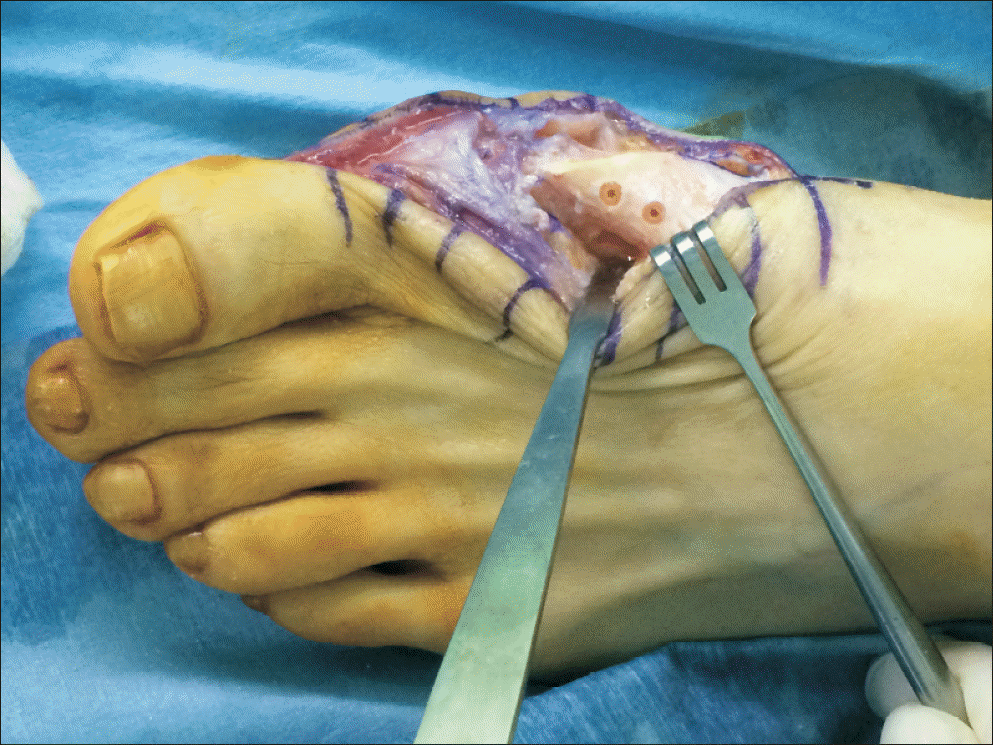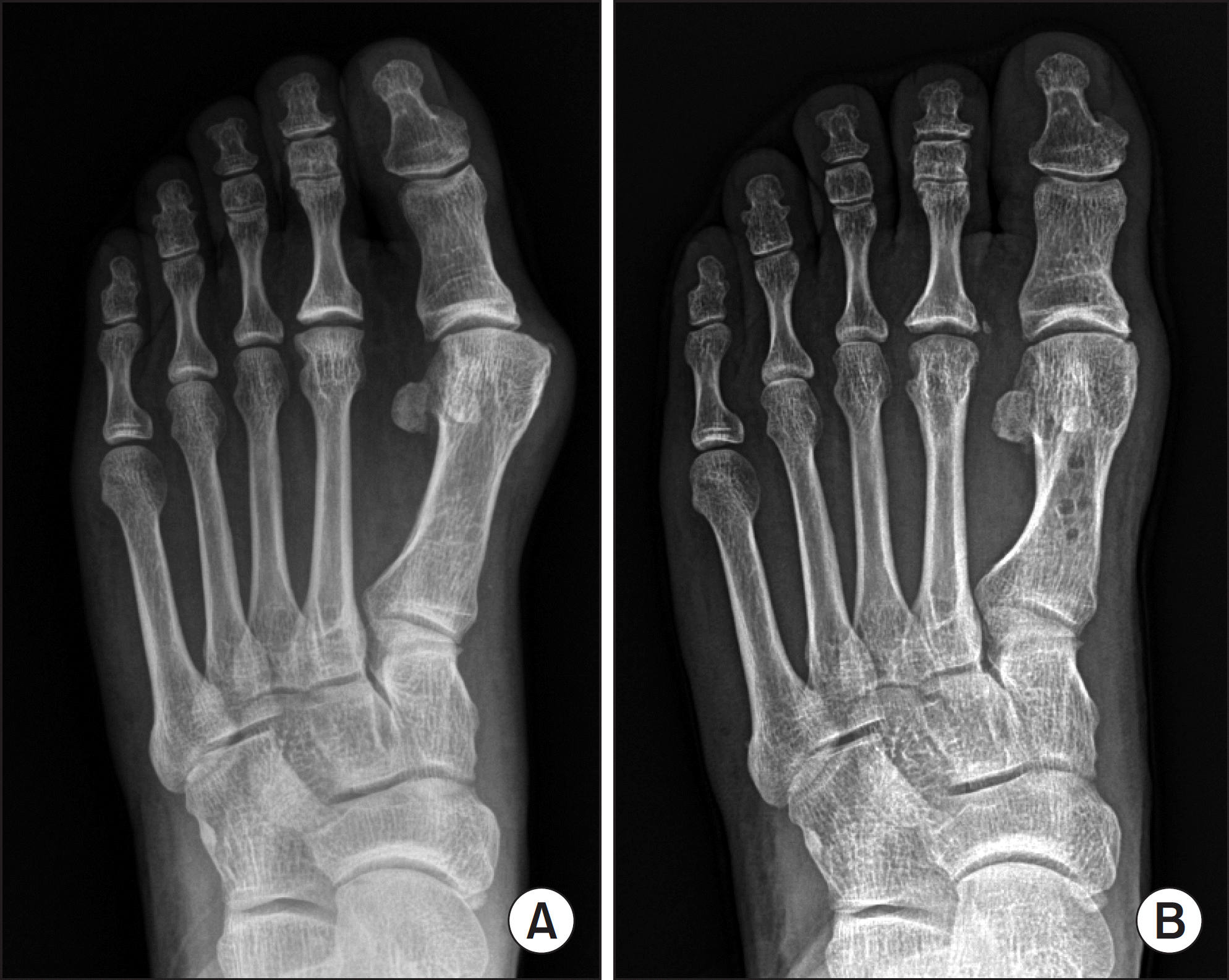Abstract
Purpose
The purpose of this study was to analyze the clinical results of application of bioabsorbable screws in hallux valgus surgery using modified Mau osteotomy.
Materials and Methods
We retrospectively reviewed medical records of 25 patients. Operations were performed between May 2013 and January 2014. We performed 33 modified Mau osteotomies and fixed using bioabsorbable screws. Mean age of patients was 52 years (range 19 to 71). Mean follow up duration was 13.2 months (range 12.3 to 18.9). The clinical evaluations included pain visual analogue scale (VAS) score, American Orthopaedic Foot and Ankle Society (AOFAS) score, and satisfaction score. Weight bearing anteroposterior radiographs were taken for measurement of hallux valgus angle (HVA), intermetatarsal angle (IMA), and distal metatarsal articular angle (DMAA). All radiographs were evaluated in order to detect complications related to bioabsorbable screws such as osteolysis, cyst formation, and fixation failure.
Results
The mean pre- and postoperative pain VAS scores were 4.0 and 1.7 (p<0.05). The mean AOFAS score improved from 52.6 to 82.8 (p<0.05). Preoperative HVA and IMA were 31.2 and 13.9, respectively. Postoperative HVA and IMA were 5.2 and 6.2 (p<0.05). The DMAA increased from 7.8 to 9.9 (p<0.05). There was one case of superficial wound infection and one loss of correction, and no case of osteolysis, cystic formation around the screw, or deep infection. All patients showed union without fixation failure.
Go to : 
References
1. Mau C, Lauber HJ. Die operative Behandlung des Hallux valgus (Nachuntersuchungen). Deutsche Zeitschrift für Chirurgie. 1926; 197:361–77.

2. Bae SY, Kim YE. Modified mau osteotomy for the treatment of severe hallux valgus. J Korean Foot Ankle Soc. 2004; 8:117–20.
3. Robinson AH, Limbers JP. Modern concepts in the treatment of hallux valgus. J Bone Joint Surg Br. 2005; 87:1038–45.

4. Stamatis ED, Navid DO, Parks BG, Myerson MS. Strength of fixation of Ludloff metatarsal osteotomy utilizing three different types of Kirschner wires: a biomechanical study. Foot Ankle Int. 2003; 24:805–11.

5. Unal AM, Baran O, Uzun B, Turan AC. Comparison of screw-fixation stabilities of first metatarsal shaft osteotomies: a biomechanical study. Acta Orthop Traumatol Turc. 2010; 44:70–5.
6. Böstman OM. Absorbable implants for the fixation of fractures1 J Bone Joint Surg Am. 1991; 73:148–53.
7. Gill LH, Martin DF, Coumas JM, Kiebzak GM. Fixation with bioabsorbable pins in chevron bunionectomy. J Bone Joint Surg Am. 1997; 79:1510–8.

8. Barber FA, Herbert MA, Coons DA, Boothby MH. Sutures and suture anchors–update 2006. Arthroscopy. 2006; 22:10631e1–9.

9. Böstman OM, Pihlajamäki HK. Adverse tissue reactions to bioabsorbable fixation devices. Clin Orthop Relat Res. 2000; 371:216–27.
10. Hirvensalo E, Böstman O, Törmälä P, Vainionpää S, Rokkanen P. Chevron osteotomy fixed with absorbable polyglycolide pins. Foot Ankle1. 1991; 11:212–81.

11. Deorio JK, Ware AW. Single absorbable polydioxanone pin fixation for distal chevron bunion osteotomies. Foot Ankle Int. 2001; 22:832–5.

Go to : 
 | Figure 1.Modified Mau osteotomy is characterized by a second cut through the plantar metaphyseal cortex. |
 | Figure 2.An additional triangular cut was made on distal fragment to prevent the metatarsal lengthening. |
 | Figure 3.This intraoperative photograph shows the fixation of modified Mau osteotomy with the bioabsorbable screws. |
 | Figure 4.(A) Preoperative weight bearing anteroposterior radiograph of 50-year-old man shows hallux valgus in the left foot. (B) Radiograph at postoperative 18 months shows improved alignment of the hallux and screw holes fixed with Bio-Compression screws (Arthrex, Naples, |
Table 1.
American Orthopaedic Foot and Ankle Society (AOFAS) Score
| AOFAS score | Preoperative | Postoperative | p-value |
|---|---|---|---|
| Pain | 24.2±5.6 | 35.2±5.7 | <0.001 |
| Function | 27.2±5.1 | 35.8±3.8 | <0.001 |
| Alignment | 1.2±2.9 | 11.8±3.9 | <0.001 |
| Total | 52.6±8.5 | 82.8±8.6 | <0.001 |




 PDF
PDF ePub
ePub Citation
Citation Print
Print


 XML Download
XML Download